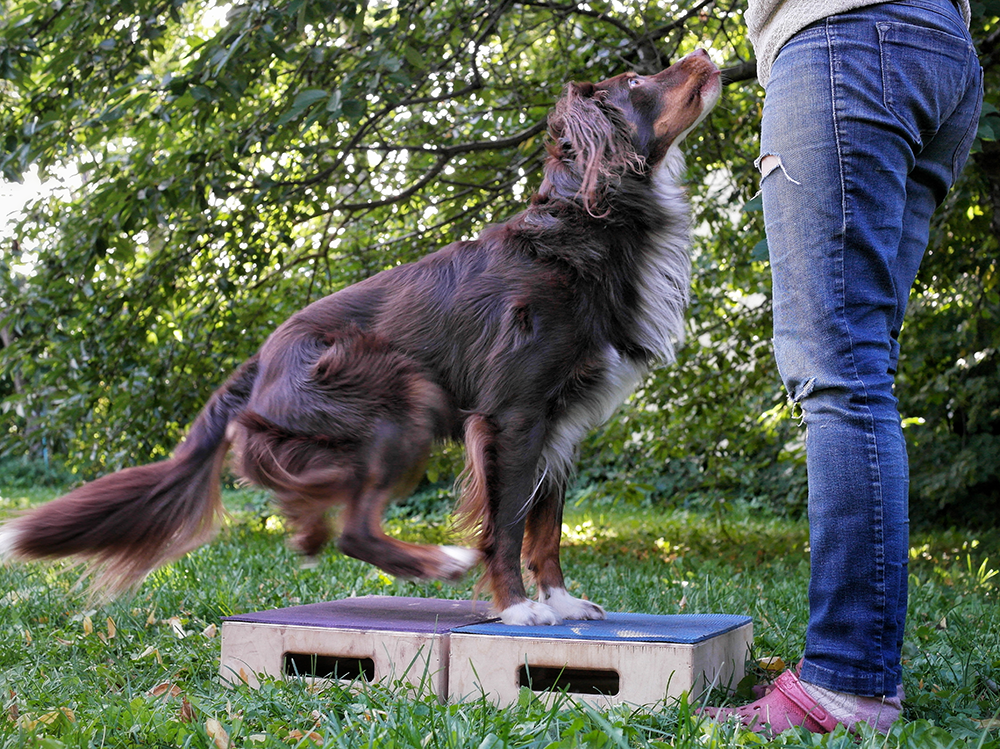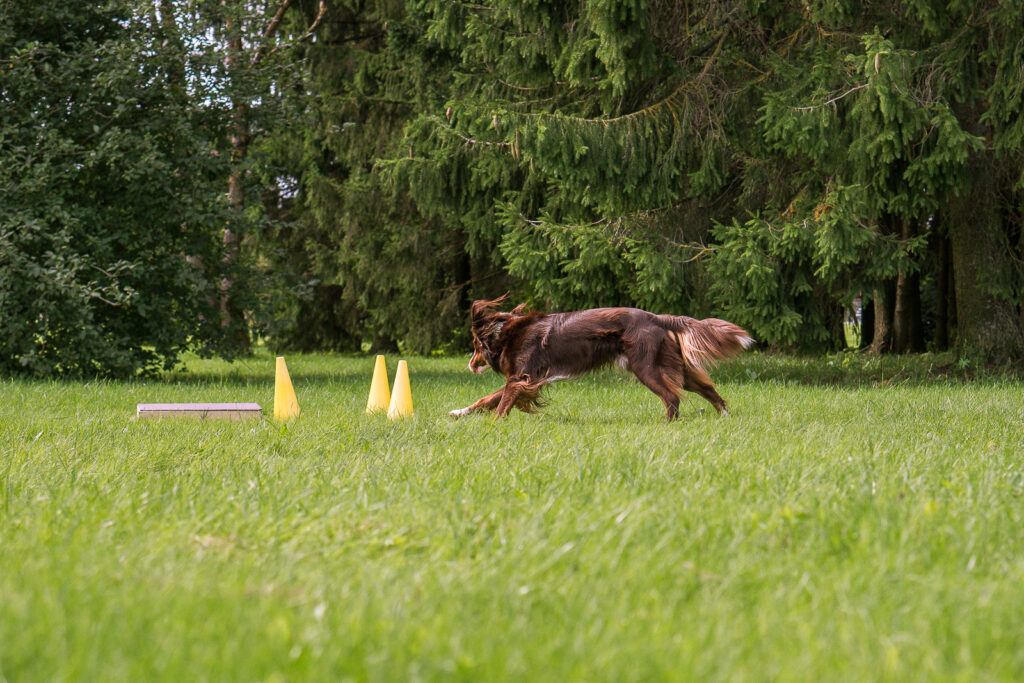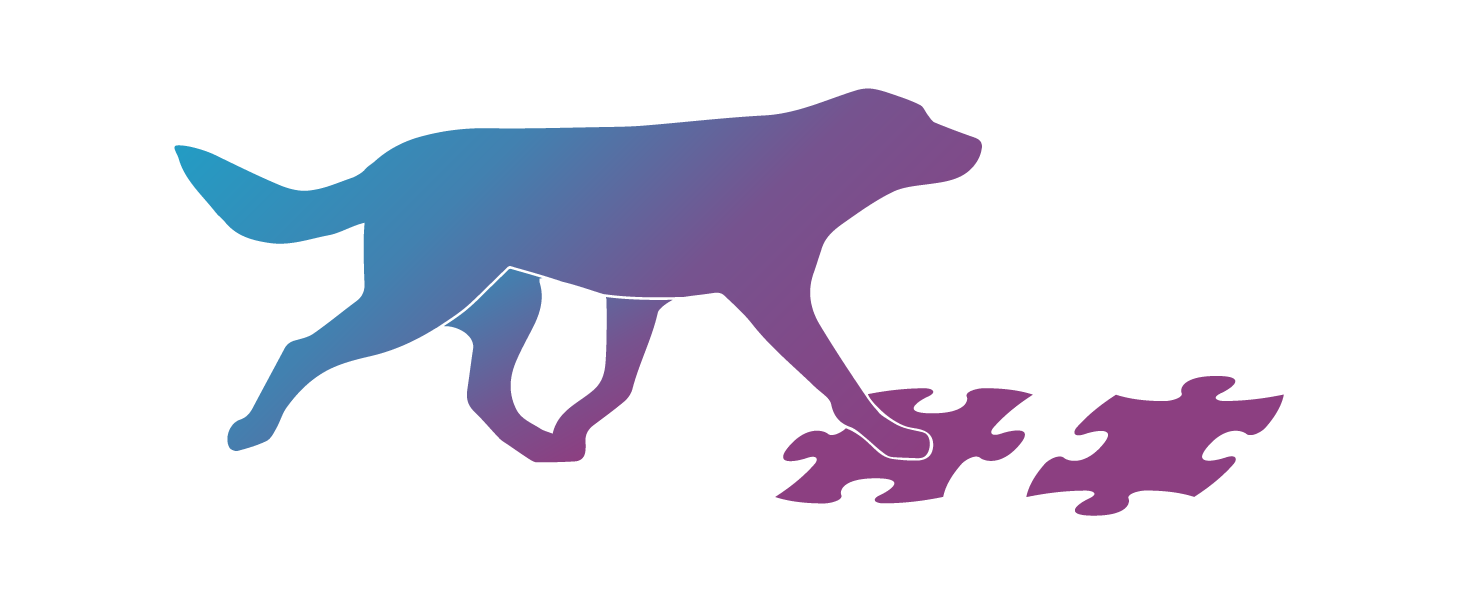Where does fitness training fit into our training plans? Is it something that is required for dogs who are participating in very strenuous exercise routines? Or maybe participating in challenging sports like dog agility? Or is it something that should be part of every training program?
Splitting for physical skills
I like to think about fitness training as a way of splitting up exercises into smaller bits. Not quite as we are used to doing, but rather from the physical skills point of view. As dog trainers, we are actually used to splitting exercises up into smaller components. Components that we can visually see during the exercise, identify, mark and reinforce. But here’s the thing: usually these behaviors are something that WE can SEE.

For example, let’s take a look at a tucked sit. An exercise where the dog keeps the front feet planted while stepping the rear feat forward under the body and lowering their pelvis into a sit. When we train this behavior, we may focus on:
- keeping the front feet planted
- shifting the weight forward
- stepping the rear feet off the ground
- moving the rear feet just behind the front legs
- lowering the pelvis into a sit
All this while the front feet are planted.
When we look at the same exercise from the physical skills point of view, then we discover that actually in order to do this seemingly simple exercise, our dogs need to have quite many different PHYSICAL skills.
They first need to have enough body awareness and control to actually focus on their front legs and keep them still while moving their body. They also need to have enough strength to carry more load on their front legs while the rear feet are moving. They also need to have enough strength and control in their rear legs to push off the ground, land behind front feet and then lower the body into a sit.
This seemingly simple exercise – a tucked sit – actually requires quite many physical skills! And if we focus only on the visible components of the exercise, then we will miss quite a large set of skills that our dogs actually need to fulfill the exercise criteria.
What about other exercises?
We can use that same logic of splitting up exercises in different scenarios. Let’s take running around the cone. Again, it’s a straightforward behavior to teach. There are many ways for teaching running around a cone, but for the sake of this post, let’s consider the following teaching route: we can start teaching it by first letting our dogs to look at the cone, then step towards the cone, then move behind the cone, and then run back to us after turning around the cone.

When we look at the same exercise from the physical skills point of view, we discover that actually our dogs need to have:
- eye- body coordination to identify where the cone is and actually guide the body to move towards the cone
- ability to estimate the distance between themselves and the cone and adjust the gait accordingly
- choose the correct movement pattern to make the turn
- ability to maintain their balance so that they won’t slip and they can keep their movement rhythm
Focusing only on the visible behaviors, something that we can identify, mark and reinforce, then we are actually missing quite many skills that our dogs need to have in order to complete the exercise.
Developing physical skills during sports exercises
When we are teaching new behaviors to our dogs, focusing on the visible behavior components, then our dogs do develop the required physical skills. To some extent. But is it really the way we want to train? Asking our dogs to multitask and figure out the technical side of the exercise while at the same time develop their physical skills? Isn’t it a bit like… lumping?
That’s why I think fitness training is crucial in every training we do with our dogs. It is actually a way of splitting the exercises and teaching the physical skills away from any sports training we intend to do with our dogs. So that once we start training the sport exercises, our dogs actually already have all the physical skills in place in order to complete the exercises. Physical skills like body awareness, control of their strength, different coordination and movement skills. All these skills that help them do focus on the task at hand so that when we are teaching technical exercises they don’t have to figure out what we are asking them to do and develop their physical skills at the same time
In the upcoming posts you will discover that actually asking our dogs to multitask during training will result in a limited set of motor skills and poor physical skills that are more difficult to transfer to other areas of training. It comes out that fitness training is actually a crucial part of every training program. It helps you to split the exercises up so that your dog actually has all the physical skills needed to finish the sports exercises.
That’s it for today. Leave me a comment below with your thoughts on this topic!
Happy training!
Mari & Co.
